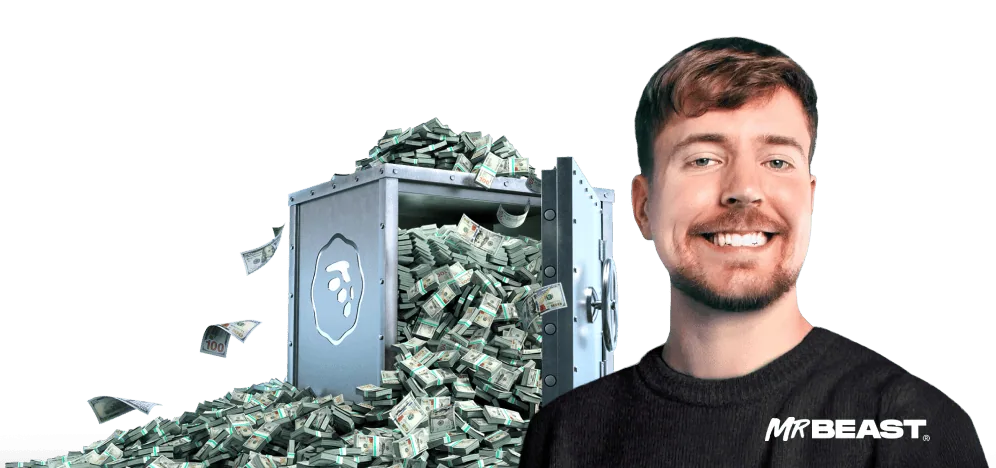💳 You’re staring at an ATM and wondering, “Can I just use my credit card here and pull out some cash?” Sure, you can do it – but just because you can, doesn’t mean you should. Stick with me and we’ll explain why using a credit card at an ATM might not be your best move, plus some alternatives you could use. 🤓💸
Check out Earned Wage Access and other cash advance offers below 💸
Table of contents
What is an ATM cash advance?
An ATM cash advance allows you to use your credit card to withdraw cash from an ATM – essentially a short-term loan against your credit limit. This feature is commonly known as a credit card cash advance. It can come in handy if you’re in a pinch, but beware: it comes with high fees and interest rates that accumulate when you get that cash. Imagine paying an upfront fee plus daily interest to access your credit – it’s like being charged to borrow your money twice! 🥴
How to use a credit card at an ATM
If you’re set on using your credit card at an ATM, here’s a step-by-step guide to make it happen:
Locate a compatible ATM
Make sure the ATM accepts your credit card. Some ATMs are brand-specific, meaning they only work with certain bank cards. A good rule of thumb is to avoid shady-looking ATMs to help protect yourself from scams. Opt for machines at reputable locations like banks or inside well-lit stores to minimize the risk of card skimming.
Insert your credit card
Slide your credit card into the ATM’s slot, just like you would with a debit card.
Enter your credit card PIN
To proceed, you’ll need your credit card’s PIN. If you don’t have one, contact your credit card issuer to set one up. It’s a quick call that might save you from much inconvenience. More about credit card PINs here: Do credit cards have PINs?
Select cash advance
Select the “Cash Advance” or “Withdraw Cash” option once the menu pops up.
Enter the amount
Specify how much you’d like to withdraw. Be mindful – most credit cards have daily or transaction limits on cash advances.
Confirm and collect
Review the transaction details, especially the fees involved. If everything looks good, confirm and wait for your cash to be dispensed. Cha-ching, but remember that cash costs much more than what you see in hand.
Why you shouldn’t use your credit card at an ATM
Using a credit card at an ATM may sound easy, but it has many disadvantages that could land you in serious financial quicksand. Here’s why:
High fees
Cash advances often involve significant fees from the ATM and your credit card issuer. Typically, there’s a 3% to 5% cash advance fee on the amount withdrawn, plus a separate ATM fee, making that $100 withdrawal cost as much as $108 or more. For instance, if you’re using the Chase Sapphire Preferred card, a $200 advance could come with a $10 cash advance fee plus an extra fee from the ATM operator. Compare that to just using your debit card and you see why cash advances can be bad.
High interest rates
Cash advances can come with sky-high interest rates – often significantly higher than your standard credit card purchase rates. And the kicker? Interest starts accruing immediately. Unlike regular credit card purchases, there’s typically no grace period. For example, the average rate for a cash advance can range from 24% to even 30% – a steep price for quick cash when you need it the most. Make sure to look at your credit card agreement to understand what fees and interest you will have to pay.
Potentially negative impact on your credit score:
Frequent cash advances can harm your credit score. The reason is twofold: (1) high cash advances can significantly increase your credit utilization ratio, which is a big part of your credit score and (2) relying on cash advances may indicate to lenders that you’re in financial distress – never a good look.
Credit card cash advance alternatives
Instead of turning to an ATM with your credit card, consider these smarter, less costly options:
Earned wage access
MoneyLion’s Instacash® allows you to access up to $500 of your wages before payday – without interest or mandatory fees. Unlike credit card cash advances, there are no mandatory fees to worry about, and you can decide when you want a small boost to cover an expense. The best part is that using Instacash doesn’t impact your credit score.
Small personal loan
A small personal loan is a better option if you need a bit of cash but don’t want to get sucked into the high-interest debt trap of a credit card cash advance. These loans generally offer lower interest rates and a clear repayment structure, making them a safer option in the long run. For more details, check out How to Get a Small Personal Loan.
Take on a side hustle or gig
Consider a side hustle if cash advances and loans aren’t your cup of tea. It could be as simple as delivering groceries or tutoring online. While this requires time investment, it’s one of the few options that adds to your income without incurring more debt. Here are some tips: Tips for Making More Money.
Think Before You Withdraw
Using a credit card at an ATM can be costly – high fees, high interest and even potential credit damage. While it might seem like a quick fix, in most cases, it’s more like putting a Band-Aid on a bullet wound. Instead, explore options like MoneyLion’s Instacash, a small personal loan or a side hustle. These alternatives won’t cost you as much in the long run and can keep you financially healthier.
FAQs
Do ATMs take credit cards?
Yes, ATMs do take credit cards, but typically, they do so for cash advances. You can withdraw cash from your credit line but be prepared for high fees and interest charges.
Why is using a credit card at an ATM generally not recommended?
Credit card cash advances can come with high fees and interest rates that start accruing immediately. They can negatively impact your credit score by increasing your credit utilization ratio.
Can I use my credit card at an ATM without a PIN?
No, you will need a PIN to use your credit card at an ATM for a cash advance. If you don’t have a PIN, you can contact your credit card issuer to set one up.














